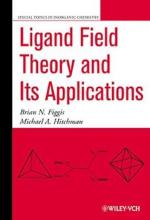|
This section contains 508 words (approx. 2 pages at 300 words per page) |

|
Developed in the first half of the 20th century to describe the electron systems of transition-metal complexes (a phenomenon within the branch of inorganic chemistry), ligand field theory is an extension of crystal field theory. Thus, it is also known as "adjusted crystal field theory." Ligand field theory and its predecessors represented huge advances in scientists' understanding of the structure, bonding, and behavior of transition metal complexes. Chemists use ligand field theory to interpret the spectra (colors) of transition metals and to understand how they react with other substances.
Somewhat similar to Linus Pauling's valence-bond model, ligand field theory is a subset of molecular orbit theory. It is more accurate and more powerful than its predecessor (crystal field theory) for explaining the chemical properties of transition metal complexes. To understand ligand field theory, it is first necessary to know the basic precept of crystal...
|
This section contains 508 words (approx. 2 pages at 300 words per page) |

|


